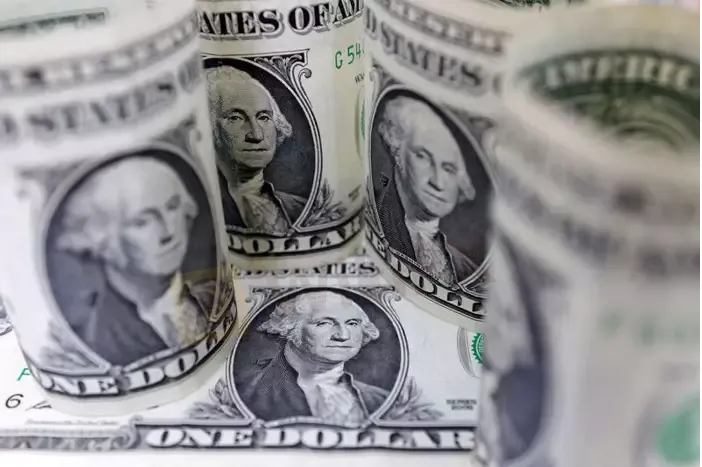Dollar extends gains against yen as big Fed hike bets ramp up
Abstract:The dollar extended it best rally against the yen since mid-June on Monday, buoyed by higher Treasury yields after blockbuster U.S. jobs data lifted expectations for more aggressive Federal Reserve policy tightening.

The dollar extended it best rally against the yen since mid-June on Monday, buoyed by higher Treasury yields after blockbuster U.S. jobs data lifted expectations for more aggressive Federal Reserve policy tightening.
The greenback was last 0.31% higher at 135.42 yen, and earlier rose to 135.585 yen, its highest since July 28, after surging 1.57% in the previous session, its biggest single-day gain since June 17.
The dollar index, which measures the currency against six counterparts, stood at 106.77, from a Friday peak of 106.93, also the strongest since July 28.
Traders currently see a 73.5% probability the Fed continues the pace of 75 basis-point interest-rate increases for its next policy decision on Sept. 21, from about 41% before surprisingly strong payrolls data on Friday raised worries that wage growth would fuel inflationary pressures.
The focus this week will be on the U.S. consumer price index due Wednesday, and whether it can cement the odds for super-sized rate rises. Analysts polled by Reuters expect annual inflation eased to 8.7% in July from 9.1% previously.
“It will likely take a number below 8.4% to get the odds of a 50bp hike in September as the default setting,” although that “seems unlikely,” Chris Weston, head of research at Pepperstone, wrote in a note.
“I wouldnt want to be short USDs if the CPI print comes in above 9%.”
The two-year Treasury yield remained elevated at 3.2628% in Tokyo trading on Monday, after reaching 3.3310% at the end of last week, a level not seen since mid-June.
The 10-year yield stood at 2.8470%, sticking close to the two-week high of 2.8690% touched Friday.
The negative spread between the two- and 10-year yields was 42 basis points, having hit 45 basis points on Friday, the most since August 2000. An inverted yield curve is widely interpreted as a pre-cursor to a recession.
Elsewhere, the euro sank 0.35% to $1.01595 while sterling slid 0.19% to $1.2050.
The British pound dropped as low as $1.2004 on Friday, a day after the Bank of England raises interest rates by an as-expected half a point at the same time as warning of a protracted downturn.
“The Bank of Englands forecast of recession underpins the vulnerability of the pound going forward,” Rabobank senior FX strategist Jane Foley wrote in a note, predicting sterling could dip to $1.14 within three months.
Meanwhile, the Australian dollar slipped 0.06% to $0.6907, while the New Zealand dollar fell 0.19% to $0.62315.

Read more

Account Deleted, Funds Gone: A New Broker Tactic to Beware Of?
The main trading dashboard account of a trader for LQH Markets was completely deleted by a broker. The trader is not being offered any access to their funds or profits. This incident shows the risks of trading markets and brokers and the importance of protecting your funds without relying on any broker.

CySEC reaches €20k settlement with ZFN EUROPE
According to report, the Cyprus Securities and Exchange Commission (CySEC) announced today that it has entered into a settlement agreement with ZFN EUROPE Ltd for the amount of €20,000. This settlement resolves a regulatory inquiry into ZFN Europe’s compliance with Cyprus’s Investment Services and Activities and Regulated Markets Law of 2017, as amended.

PrimeXBT Expands Trading Options with Stock CFDs on MT5
PrimeXBT launches stock CFDs on MetaTrader 5, offering shares of major U.S. companies with crypto or USD margin for enhanced multi-asset trading.

Broker Comparsion: FXTM vs AvaTrade
FXTM and AvaTrade are two well-established online brokers offering forex and CFD trading across global markets. Both enjoy strong reputations and high ratings on WikiFX—FXTM holds an AAA overall rating, while AvaTrade scores 9.49/10, indicating they’re regarded as reliable choices by the community. However, since brokers have great reputation in the industry, how do we know which one is more suitable for individuals to invest in? Today's article is about the comparison between FXTM and AvaTrade.
WikiFX Broker
Latest News
Love, Investment & Lies: Online Date Turned into a RM103,000 Scam
Broker’s Promise Turns to Loss – Funds Disappear, No Compensation!
Broker Took 10% of User's Profits – New Way to Swindle You? Beware!
Pi Network: Scam Allegations Spark Heated Debate
Broker Comparsion: FXTM vs AvaTrade
Account Deleted, Funds Gone: A New Broker Tactic to Beware Of?
El Salvador and U.S. Launch Cross-Border Crypto Regulatory Sandbox
The Instagram Promise That Stole RM33,000
Kraken Partners with Alpaca to Offer U.S. Stocks and Crypto
Before You Trade the Next Big Thing, Remember the Dot-Com Collapse
Rate Calc
